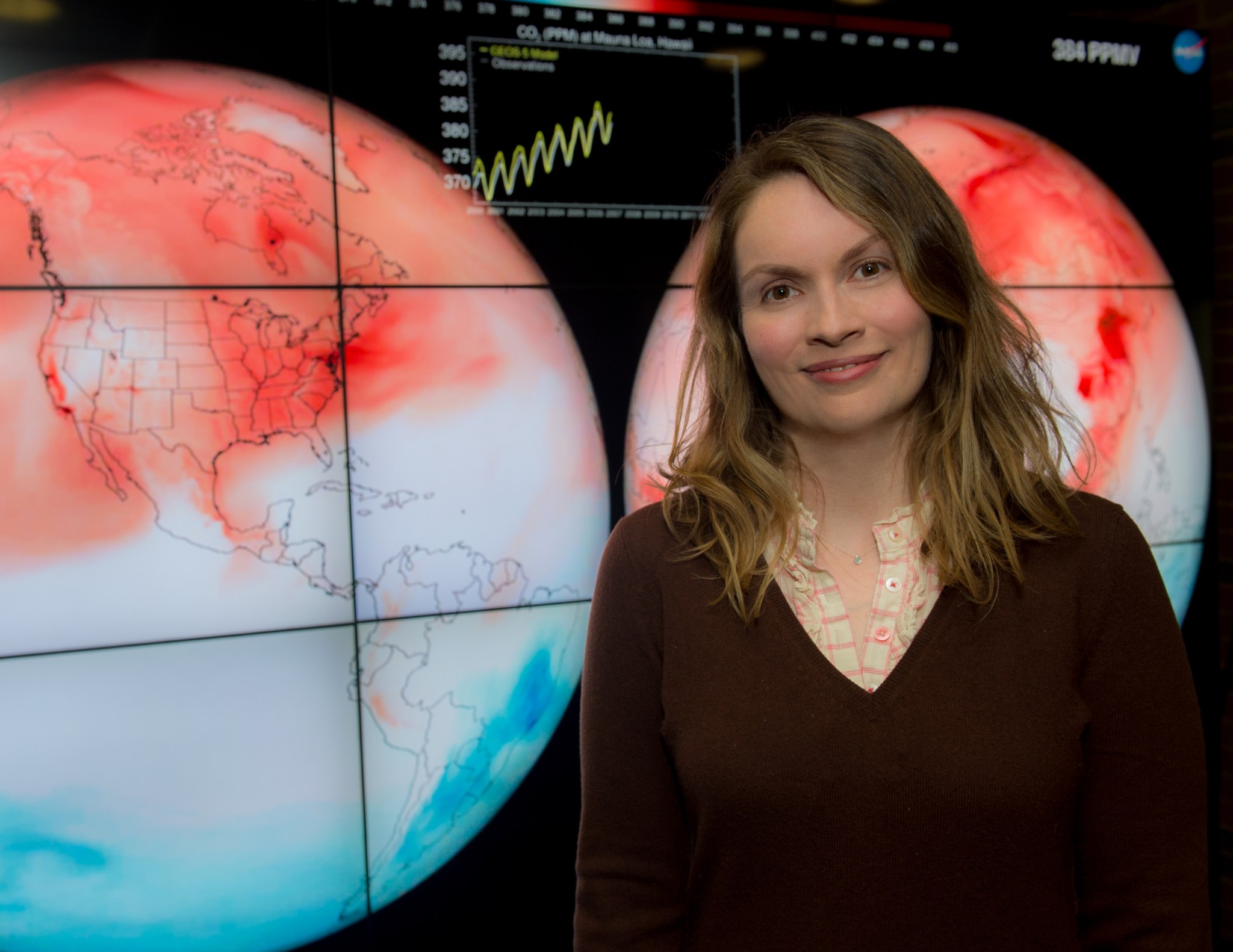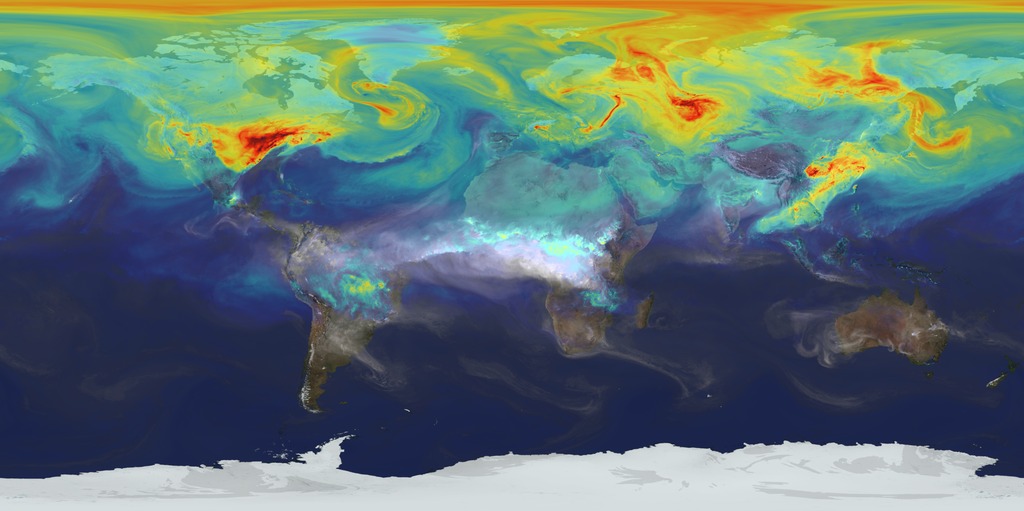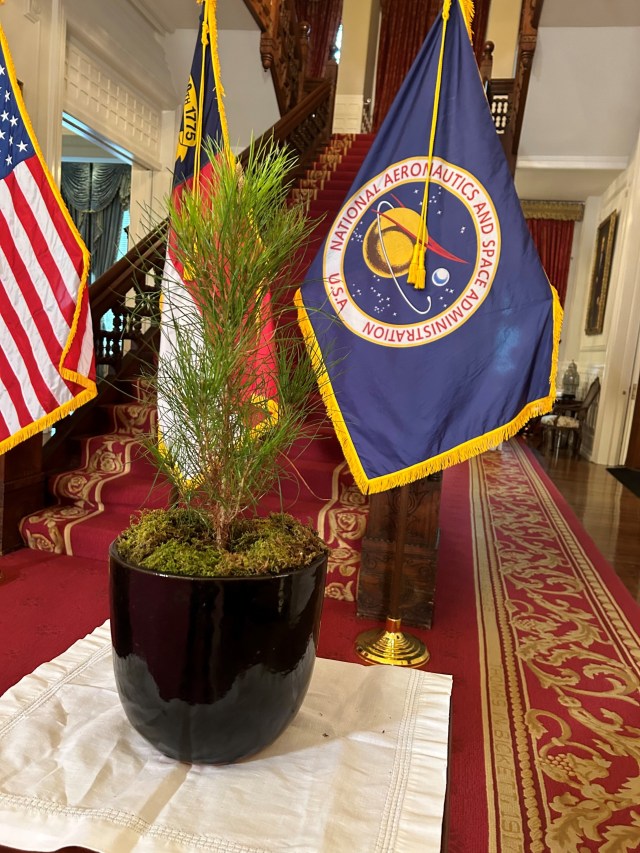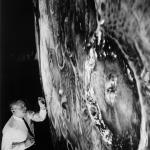Name: Lesley Ott
Title: Carbon Cycle Modeler
Formal Job Classification: Research Meteorologist
Organization: Code 610.1, Global Modeling and Assimilation Office, Earth Sciences Directorate
Carbon Weather Forecaster
What do you do and what is most interesting about your role here at Goddard? How do you help support Goddard’s mission?
I am a meteorologist by training. I work in the Global Modeling and Assimilation Office at NASA’s Goddard Space Flight Center in Greenbelt, Maryland. I use models of the atmosphere, land and ocean to try to understand how carbon moves through the Earth’s system. The carbon cycle is important because it controls how quickly carbon dioxide, the most important greenhouse gas released by human activities, accumulates in the atmosphere. The accumulation of carbon dioxide is driving climate change. So to understand climate change, we must first understand the carbon cycle.
Where do you work?
I spend most of my day in front of a computer running computer models and analyzing the results. I sit at my desk, but my computer is connected to NASA’s supercomputers, which are thousands of times more powerful than a typical laptop. We have one here at Goddard and another at NASA’s Ames Research Center at Moffett Field, California. Our supercomputers make it possible for us to push the boundaries of Earth science and produce animations for people throughout the world to see.
Goddard’s supercomputer is powerful enough to allow us to run a simulation of atmospheric carbon dioxide, CO2, at a resolution about 1,000 times greater than most typical simulations. The higher resolution allows us to see a lot more detail of the atmospheric distribution of carbon. We can see the impacts of fires and cities more clearly. These kinds of simulations are also helping us understand the data from our new satellite that measures atmospheric carbon dioxide called the Orbiting Carbon Observatory 2 (OCO-2).
Are you involved in any field campaigns?
Although I’ve never been in the field, our group works closely with teams doing field research. We help the teams identify where they should sample and how they should sample to get the best science.
One upcoming field campaign we’re excited about is called ACT-America which will study how atmospheric carbon dioxide is transported by different weather systems such as storms, cold fronts and other large scale atmospheric circulations. ACT-America will have bases in the mid-Atlantic, the southeastern United States and the Midwest. Each base has interesting weather but also different types of vegetation, which control the exchange of carbon dioxide between the land and the atmosphere.
We’re looking forward to helping the field campaigns by providing them with information from our weather model so they can plan where to fly their aircraft to get samples. After the field campaign is over, we will analyze their data to improve our model.
Please tell us about Goddard’s weather model?
Our model is the Goddard Earth Observing System Model, Version 5, or GEOS-5. Our model is similar to the types of models meteorologists use to forecast snowstorms and rainstorms. We use our model to try to understand NASA satellite observations and to help plan for future missions.
GEOS-5 takes in about six million observations every six hours to make a forecast. One of the unique things about our forecasts is that they cover both regular weather and things that affect human health like aerosols and carbon monoxide throughout the world.
Why did you decide to become a meteorologist?
I’ve always liked clouds. I’ve always been amazed by the way air moves around us. I started taking meteorology classes in college to learn more. I really like meteorology because it’s a personal science. Everyone always wants to know about the weather and it’s the first thing we all reach for when we need to start a conversation. Weather affects everybody, old or young, rich or poor. It’s really fun to study and have some inside knowledge of the weather. Because it’s always changing, it never gets boring.
What was unique about your path to becoming a meteorologist?
I have a bachelor’s degree in physical sciences from the University of Maryland, which gave me a broad scientific background to prepare for graduate school. My introduction to different scientific disciplines gave me a good grounding in various sciences before combining them all to study the intricacies of meteorology. One of the challenging things about meteorology is that it requires a knowledge of physics, math, computer science and chemistry. You really need to understand the big picture formed by a lot of little pieces.
For example, I’m a meteorologist but I also look at some aspects of chemistry. It’s especially important that I had a broad scientific background so that I can look at the science from different perspectives.
My master’s and Ph.D. are also both from Maryland and are in atmospheric sciences, which is meteorology.
If someone wanted to become a meteorologist, what would you tell him or her to do first?
I would tell people to really focus on understanding the fundamentals of math and physics. Sometimes when you’re in school, these areas can seem disconnected from real life applications. But understanding the foundations really well is critical for performing my job.
One nice thing about graduate school in meteorology is that there are many different paths. You can get an undergraduate degree in physics or math and then go on to graduate school in meteorology. You don’t have to do everything at once. After a good grounding in basic science, you can then learn about meteorology in stages and I think you understand it more completely that way.
Believe it or not, that esoteric calculus class actually has real-life meaning in the world of meteorology. Meteorology makes the abstract become real.
Who is the most interesting, inspiring or amazing person you have met or worked with at Goddard?
My boss Dr. Piers Sellers is an inspiration to many of us younger scientists at Goddard. He does a great job understanding the big picture of science, in particular the carbon cycle. He is always encouraging us to do the things that seem impossible. Though he is an internationally renowned, very famous scientist and astronaut, he always makes the time to speak to and encourage young scientists. He has changed the lives of so many young scientists through his personal interactions. We’re lucky to have him as a role model.
What is the coolest thing you’ve ever done as part of your job at Goddard?
One of the most exciting parts of my job has been my involvement with the science team for OCO-2, which is designed to measure carbon dioxide. It is really allowing us to see an important part of the Earth’s system in a whole new way.
Goddard was planning for this satellite since before I started at Goddard in 2006. The entire international team worked very hard to make the preparations that supported the launch in July 2014.
Now OCO-2 is giving us a tremendous amount of data, which we can use to evaluate our models only a few days after they are collected.
Do you have a favorite way or place to kick back, relax or have fun?
I love being at home with my husband. I enjoy doing quiet things like cooking, knitting and playing with our cat.
We all give a lot to our work. I think it is very important to take some time just for yourself to relax. It helps keep us balanced.
Who is your favorite weather forecaster?
Bob Ryan is my favorite local weatherman. Since I am from Maryland, I grew up watching him on TV. He has a really strong scientific background and does a great job communicating with people in a way that they can understand. I appreciate that he always remains calm no matter how much snow he predicts.
I also really like Jason Samenow and the Capital Weather Gang for more in-depth coverage of the weather. They update their blog multiple times throughout the day to help readers learn about weather in the Washington, D.C., region and often highlight important weather and climate research underway at Goddard.
By Elizabeth M. Jarrell
NASA’s Goddard Space Flight Center, Greenbelt, Md.

Conversations With Goddard is a collection of Q&A profiles highlighting the breadth and depth of NASA’s Goddard Space Flight Center’s talented and diverse workforce. The Conversations have been published twice a month on average since May 2011. Read past editions on Goddard’s “Our People” webpage.


































